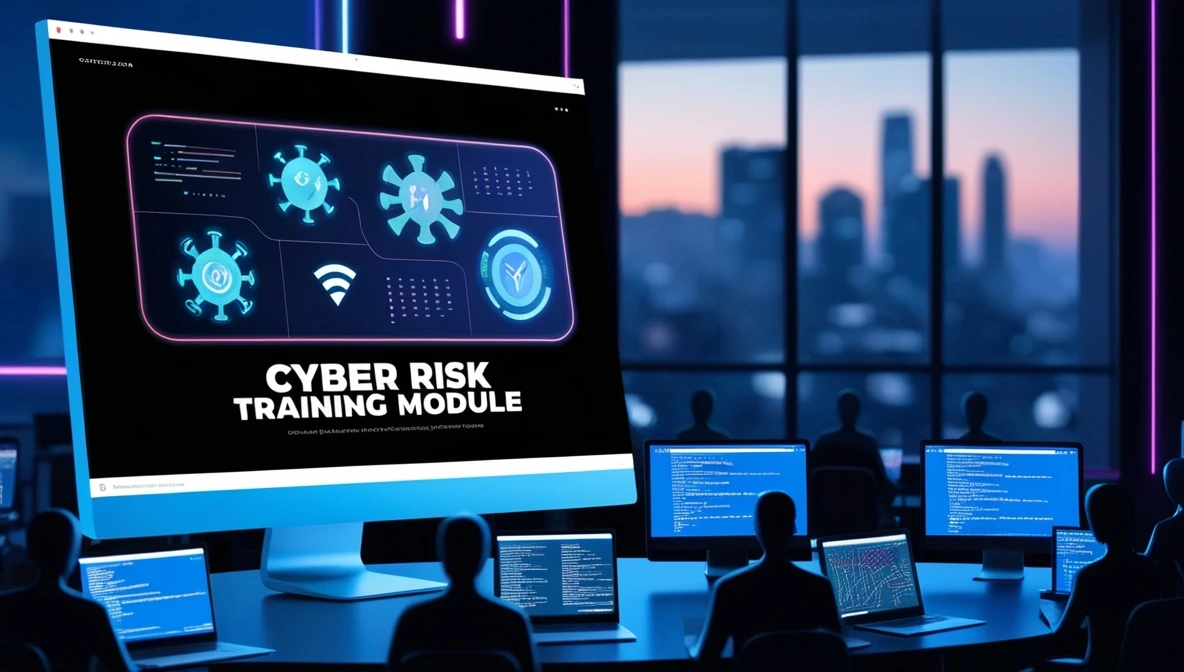Cyber Risk Training is no longer optional — it’s a core part of modern business resilience. As digital ecosystems expand, so do the opportunities for cybercriminals to exploit weak points. From ransomware and phishing to insider threats, today’s organizations face a broad range of risks that can’t be mitigated by software alone. The human element — awareness, behavior, and response — plays an equally vital role in safeguarding data and operations. That’s exactly where Cyber Risk Training steps in.
This blog explores what Cyber Risk Training really means, why it’s essential, and how to effectively teach your teams to recognize and respond to potential threats.
What Is Cyber Risk Training?
At its core, Cyber Risk Training is an educational program that helps employees understand the various cyber threats that could impact your organization — and how to mitigate them. It goes beyond awareness to cultivate decision-making skills and risk-based thinking.
Employees learn to identify:
- Potential vulnerabilities in systems or workflows
- Risky online behaviors that open security gaps
- The consequences of data breaches or compliance failures
Unlike general awareness courses, Cyber Risk Training dives deeper into how risks connect to real business operations. It helps staff grasp the “why” behind security policies, not just the “how.”
Why Cyber Risk Training Matters
Cyber threats evolve faster than most companies can update their defenses. Hackers target human habits — curiosity, trust, haste — to bypass even the most advanced systems. This makes employee education one of the most powerful defense layers available.
A well-designed Cyber Risk Training program can:
- Reduce human error: The number one cause of data breaches.
- Improve compliance: Ensure your teams meet industry and data protection standards.
- Enhance incident response: Employees can spot and report threats before damage spreads.
- Create a risk-aware culture: Where everyone contributes to cybersecurity resilience.
Ultimately, the return on investment from Cyber Risk Training lies in prevention — stopping incidents before they happen.
Understanding Cyber Threats
Before teaching others, it’s important to understand what your teams are up against. Common cyber threats include:
- Phishing: Deceptive emails designed to steal credentials or spread malware.
- Ransomware: Malicious software that locks data until a ransom is paid.
- Insider threats: Employees who intentionally or accidentally expose sensitive data.
- Social engineering: Manipulative tactics that exploit trust or authority.
- Zero-day attacks: Exploits of vulnerabilities before software developers can patch them.
Through Cyber Risk Training, employees learn to recognize the signs of each and respond appropriately — whether that means reporting suspicious messages, following safe data-sharing practices, or avoiding risky downloads.
Understanding Vulnerabilities
A vulnerability is any weakness that can be exploited by a cyber threat. These can be technical, such as outdated software, or human, such as poor password hygiene or weak access controls.
An effective Cyber Risk Training program should help employees identify vulnerabilities in their daily work. For example:
- Leaving systems unlocked or unattended
- Sharing credentials through insecure channels
- Ignoring software updates
- Using personal devices for corporate work
Teaching vulnerability awareness ensures employees actively think about risk before they act — a powerful shift in mindset that technology alone can’t achieve.
How to Teach Cyber Risk Training Effectively
Delivering Cyber Risk Training isn’t about dumping technical jargon on employees. It’s about making cybersecurity relatable, engaging, and continuous. Here are key steps to make your training impactful:
1. Customize for Each Department
Different departments face different risks. Tailor your Cyber Risk Training to reflect real-world scenarios your employees encounter daily. For example, finance teams may face more phishing risks, while IT may focus on access management.
2. Use Interactive Learning
Replace long PowerPoint slides with simulations, gamified lessons, and quizzes. When employees participate, they retain more information — and practice real responses.
3. Incorporate Real Incidents
Case studies of recent breaches (either in your industry or globally) can make lessons more memorable. They show employees the real cost of mistakes and how Cyber Risk Training can prevent similar outcomes.
4. Reinforce Regularly
Cyber risk isn’t static. Conduct refresher sessions every quarter to address new threats and reinforce key habits. Microlearning — short, focused lessons — works especially well for busy teams.
5. Measure Progress
Use metrics such as training completion rates, phishing simulation results, and post-training assessments to evaluate effectiveness. Over time, these KPIs help refine your Cyber Risk Training strategy.
The Role of Leadership in Cyber Risk Awareness
A successful Cyber Risk Training initiative starts from the top. When leadership actively participates, it sends a clear message that cybersecurity is everyone’s responsibility. Executives should model secure behaviors, communicate priorities clearly, and encourage employees to speak up about suspicious activity without fear of blame.
By embedding risk awareness into company culture, leaders help ensure Cyber Risk Training becomes a continuous cycle — not a one-off event.
Cyber Risk Training as a Competitive Advantage
Companies that invest in Cyber Risk Training not only protect themselves but also gain an edge in the marketplace. Clients and partners increasingly demand proof of cybersecurity readiness before doing business. Demonstrating a robust training program builds trust, strengthens compliance posture, and enhances brand reputation.
In a world where digital threats can instantly damage credibility, training your people to think securely can be one of your strongest differentiators.
Final Thoughts: Build Resilience with CyberGuardiansLLC
Cyber threats are inevitable — but data breaches don’t have to be. With consistent Cyber Risk Training, your employees can become your most powerful defense, turning awareness into action and uncertainty into resilience.
At CyberGuardiansLLC, we specialize in creating customized Cyber Risk Training solutions that help businesses understand, identify, and mitigate evolving threats. Our expert-led programs transform teams into confident defenders who recognize vulnerabilities before they become problems.
Visit CyberGuardiansLLC today to learn how we can help you strengthen your cybersecurity posture through smarter, scalable training.


No Comments